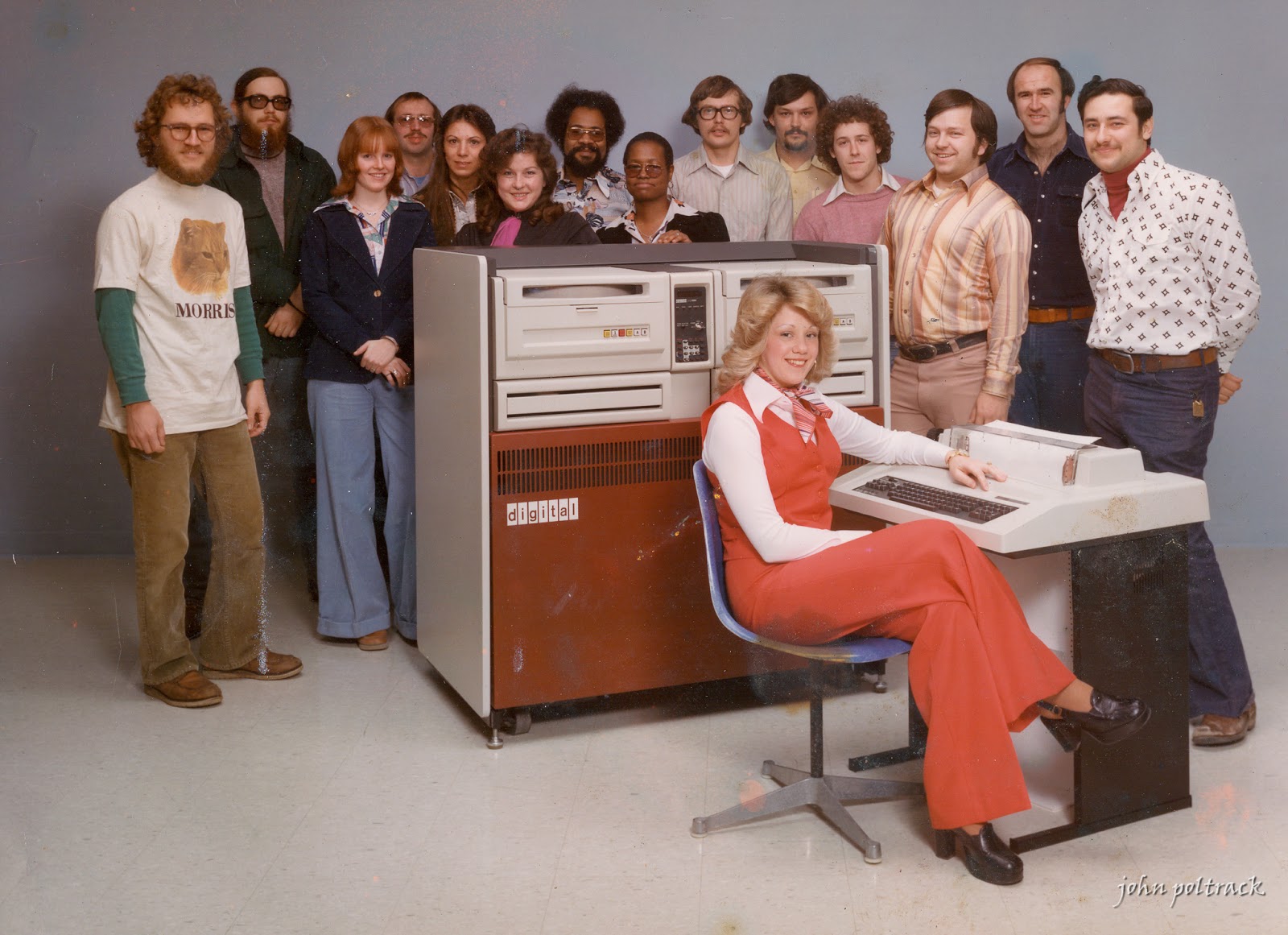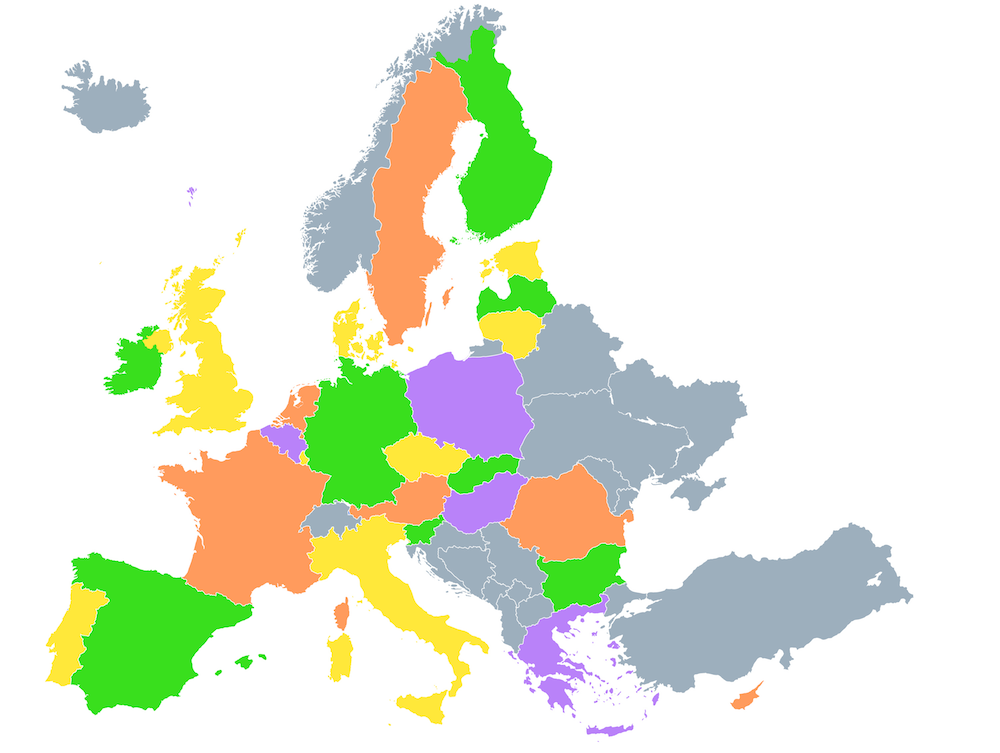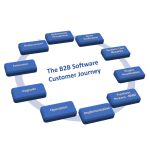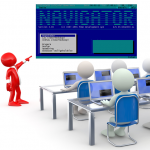Why Navision Software Gave IBM the Cold Shoulder

Jesper Balser (left), Peter Bang, Carl Christian Ægidius (IBM), Ole Anker Larsen (IBM) and Torben Wind. The picture is from October 1987, where IBM was appointed the exclusive distributor for Navigator in Denmark.
As mentioned in the first two articles of this series, IBM and PC&C (which changed their name to Navision Software in 1995) announced their collaboration in October 1987. IBM would be a sole distributor of Navigator in Denmark.
The collaboration was an indisputable success, and PC&C doubled its turnover from $1M to $2,1M in the fiscal year ending April 1988. In 1990/91, sales reached $3,7M and in 1993/94 $7,5M. (PC&C received 30% of retail sales, while IBM and the resellers shared the 70%. Thus, in 1993/94, Navigator sold licenses at a market value of over $25M!).
The agreement was also a great success for IBM, which sold hardware to the many Navigator solutions, and with this cooperation strengthened its position in the PC market in Denmark.
However, when IBM made the first acquisition proposal to PC&C in 1990, Jesper Balser and his co-founders declined. Why did they do so?
Where was the market heading?

A DEC PDP 11/60 minicomputer (C. 1973) with a lineup of people very different to the IBM style
PC&C and IBM didn’t share the same expectations for how the IT market would develop.
PC&C decided very early on to focus on developing user-friendly financial management solutions for small businesses based on IBM’s PC. At the start of the 1990s, they remained convinced that the platform would consist of DOS, Windows, Ethernet, and Novell, but the hardware itself did not necessarily have to come from IBM. PC&C were not convinced that the proprietary technologies IBM promoted would win the market’s favor.
In the 1970s, IBM had misjudged the development of the market as Digital Equipment Corporation introduced their PDP and VAX minicomputers. In just ten years, IBM’s share of the global IT market fell from 60% to around 32% worldwide. With the launch of the PC in 1981, IBM succeeded in creating a new segment in the market with their 16-bit microcomputers, and again saw an increase in market share until the late mid-1980s. With Systems 3, 34, 36, 38 and AS/400 they also managed to get a share of the market for minicomputers, but in no way with the same dominance as in the area of mainframes.
Who depended on who?
As the cooperation evolved, PC&C saw that the dealers became more involved with Navigator than with IBM’s hardware. Dealers needed more expertise to sell Navigator solutions than was required to sell PCs, printers, and networks, and besides, the gross margin on the Navigator business was enhanced by the implementation and customization services customers wanted. It became easier for dealers to switch hardware suppliers than it did to change application provider.
The reseller’s loyalty to IBM was primarily based on fear of losing the authorization and thus being left out of the large orders that IBM channeled through the dealers to their major customers. The loyalty to Navigator, on the other hand, was voluntary and of a more natural business nature (as I explain in my book “5,460 Miles from Silicon Valley“)
Lack of international expectations
 The expectation that fruitful cooperation with IBM in Denmark could spread to other countries quickly turned out to be questionable. When IBM’s sister companies in Europe were presented with the Navigator opportunity, they didn’t show much curiosity and interest. Only IBM Spain gave the opportunity the thumbs up and began the localization of the product in 1991.
The expectation that fruitful cooperation with IBM in Denmark could spread to other countries quickly turned out to be questionable. When IBM’s sister companies in Europe were presented with the Navigator opportunity, they didn’t show much curiosity and interest. Only IBM Spain gave the opportunity the thumbs up and began the localization of the product in 1991.
IBM’s international setup with autonomous country organizations with very little cooperation across borders is characteristic of virtually all multinational companies. Ideas that are promoted across the organizational structure are typically met with a blur of skepticism and “not invented here” attitude, but the friction is also caused by lack of systems for dealing with cross-border trade. It is difficult to allocate resources to projects that do not flow down the command chain and are, therefore, not supported by the product line budgets. In a multinational company, it is typically the headquarters or product organizations that are responsible for product maturation (product management and product marketing) while the country companies are sheer sales companies. To assume the distribution of a product such as Navigator thus required competencies and resources that the individual IBM country subsidiary just did not possess.
IBM Danmark was successful because PC&C as a Danish software company was able to handle product management and localization for the Danish market, but also because there was a person at IBM in Denmark (René Stockner) who was interested in and had the background to understand both the technical details and the business aspects of Navigator. Without a person like René, it is unlikely that the collaboration between PC&C and IBM would have been successful (René Stockner left IBM in 1992 to become responsible for PC&C’s US operations).
The success of a company affects the employees’ self-perception
At the time IBM and PC&C got engaged, the former was by far the world’s most powerful IT supplier with a market share among the largest of companies at over 60%. IBM in Denmark performed far better than its peers and was, therefore, both promoted and highlighted at internal meetings and events. Most of IBM’s employees perceived IBM as the world’s best and most talented company and felt a little sorry for people who just had to work for other IT companies.
When PC&C declined the acquisition offer from IBM, it came as a big surprise to the latter that the former did not want to be part of the prestigious IBM family. But PC&C had proof that IBM would not be able to help with the internationalization of Navigator. What other benefits would an acquisition have when the offered price was ridiculously low, and the entire acquisition approach was hopelessly unprofessional?








